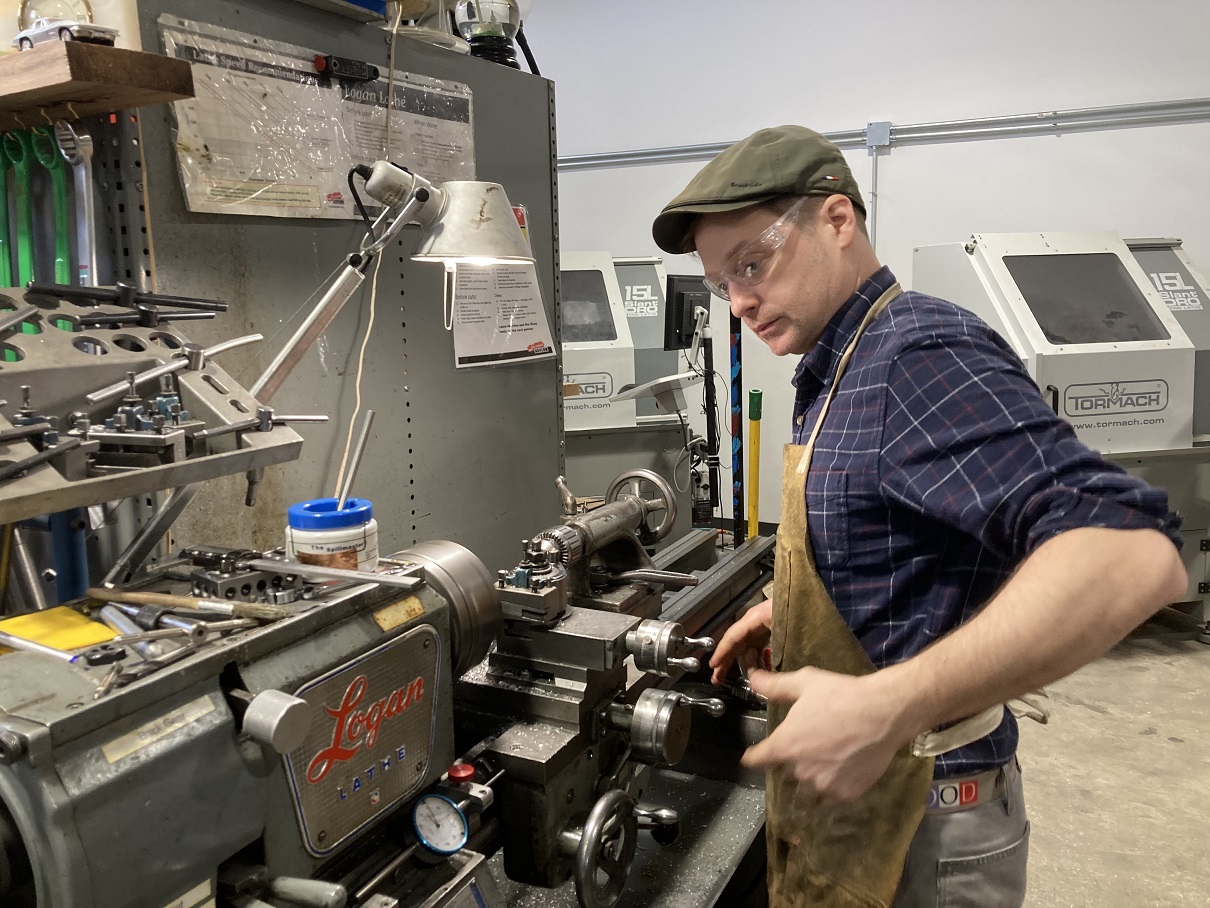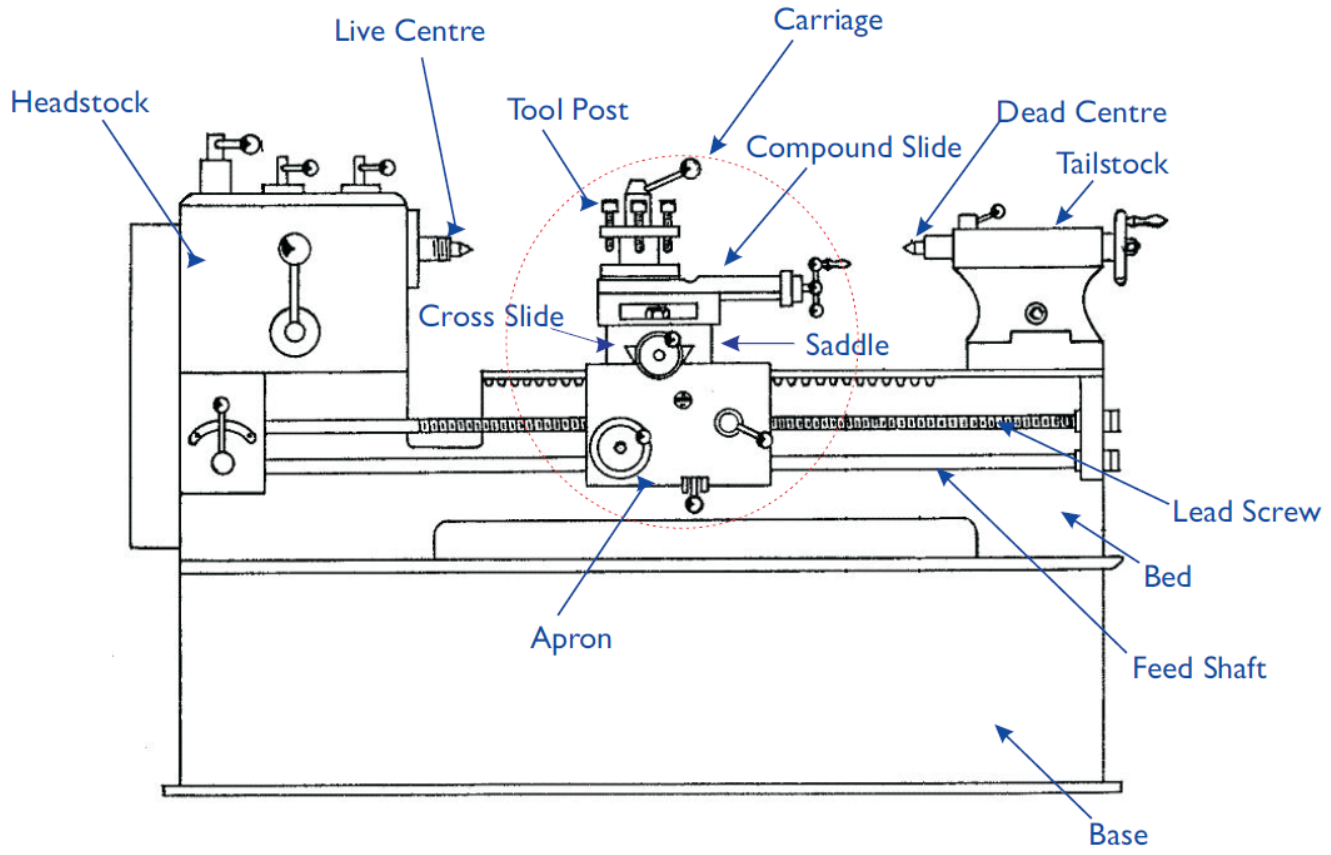Category:Lathes -- Metal
| Eye protection required! | ||
|---|---|---|
| Metal-Cutting Lathes | |
|---|---|
| General Info | |
| Make | various |
| Model | |
| Serial | |
| Specs | |
| Manual | |
| Asylum Info | |
| Location | Machine Shop |
| Rubric | |
| Training | |
| Testing | |
| Restrictions | red |
Description
A lathe is a machine tool that turns workpiece on a rotating spindle and allows the operator to cut it with a sharp tool. A metal or plastic workpiece is held in a chuck and a sharp cutting tool is manipulated on a moving tool holder by manual motion; or by a mechanized drive geared to the spindle; or by CNC.
Cutting tools are most often simple sharpened square bars of high-speed steel that are clamped to a moving tool post. Drills and various specialized cutting tools are also avaialble.
Link to: Online lathe textbook
| Use For | Do Not Use For |
|---|---|
|
|
Safety
Personal:
- Wear safety goggles with side protectors to guard against '''smoking-hot flying razor-sharp metal chips.''' Eyeglasses are not safety goggles.
- Do not wear loose clothing or jewelry. Tie back long hair or secure under a cap. Loose items like these can be drawn into the machine and maim or kill the user.
Parts of a Lathe
Headstock
Traditionally located on the left side of the machine, the spindle is most usually belt-driven and speed controls are located on it.
The spindle is hollow to accommodate long workpieces. A variety of mounting fixtures are available: Collets, face plates, and chucks.
| Major parts on a lathe |
Bed
The smooth, precisely milled ways on the bed ensure that the motion of the carriage and tailstock are perfectly parallel to the axis of rotation of the spindle. The bed also carries a precision lead screw that can be used to drive the carriage for machining and thread cutting.
Carriage
An apron rides on the ways. It contains drive gears and a split nut that can be opened and closed over the lead screw to automate its motion. The apron can be also moved manually with a crank.
The cross-slide is carried on the apron and moves perpendicular to the spindle axis. It has a wheel for fine adjustments similar to the cross-feed on a milling machine.
The compound rest rides on the cross-slide. It can swivel and slide back and forth on top of the carriage and it holds the cutting tool.
A tool post mounts to the compound rest and clamps the cutting tool in place.
Tailstock
The tailstock supports the workpiece at the right end of the bed. A long workpiece would be supported by a "center," a pointed tool that keeps the workpiece fixed on its axis of rotation. The tailstock also permits drill bits to be chucked and fed into the spinning workpiece.
Pages in category "Lathes -- Metal"
The following 5 pages are in this category, out of 5 total.

